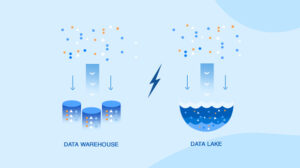Server-side tracking is a method of collecting and processing user data from web and mobile applications directly on the server rather than on the client’s device, such as a browser or mobile app. This approach contrasts with client-side tracking, where data is collected and processed on the user’s device before being sent to the server.
Server-side tracking offers several advantages over client-side tracking, including improved data accuracy, increased data privacy and security, and reduced reliance on browser cookies. Additionally, it can result in faster website performance, as it offloads some of the data processing tasks from the user’s device to the server. This method also provides businesses with more control over data collection and processing, enabling them to comply better with data privacy regulations and adapt to the evolving digital landscape.
Despite the benefits, server-side tracking also has its limitations, such as increased server load and slower real-time data collection. It is essential to consider these factors and evaluate the specific needs and use cases of a business before implementing server-side tracking.
Server-side Tracking vs Client-side Tracking
The differences between the two tracking approaches, server-side vs client-side are given in the table below:
| Category | Server-side Tracking | Client-side Tracking |
| Data Collection | Data is collected on the server, directly from backend systems | Data is collected in the user’s browser or device |
| Data Accuracy | Less prone to inaccuracies due to ad-blockers or browser limitations | Can be affected by ad-blockers, browser restrictions, and user settings |
| Data Privacy & Security | Better control over data security and privacy as data is collected on the server | Less control over data security and privacy as data is exposed on the user’s device |
| Performance Impact | Minimal impact on website or app performance | Can impact website or app performance due to additional JavaScript code |
| Implementation Complexity | Requires more technical expertise and server-side development | Easier to implement using tag management systems like Google Tag Manager |
| Data Types | Better for capturing transactional, CRM, and other backend data | Better for capturing user interactions, events, and front-end data |
| Cookie Dependency | Less reliant on browser cookies | More reliant on browser cookies |
| Real-time Data | Can be slower as data is processed on the server | Faster data collection as data is captured on the user’s device |
| Server Load | Increases server load | No impact on server load |
| Cross-domain Tracking | Easier to implement cross-domain tracking | Requires additional configuration for cross-domain tracking |
| Data Enrichment & Transformation | Easier to enrich and transform data before sending to analytics platforms | Limited data enrichment and transformation capabilities |
While both methods have their advantages and limitations, businesses should carefully evaluate their specific needs and use cases to determine the best tracking strategy.
Impact of Tracking on Revenue
Let’s consider an eCommerce business with the following hypothetical data to illustrate the potential revenue loss when using only one tracking approach:
- Monthly website visitors: 100,000
- Average conversion rate: 2%
- Average order value (AOV): $50
- Ad-blocker usage rate: 20%
- Revenue loss due to inaccurate tracking: 10%
Using client-side tracking only:
- Due to ad-blockers, 20% of visitors (20,000) may not be accurately tracked.
- Lost conversions from these visitors: 20,000 * 2% = 400
- Lost revenue from these conversions: 400 * $50 = $20,000
- If 10% of the remaining revenue is lost due to inaccurate tracking, the additional loss would be: 0.1 * (100,000 – 20,000) * 2% * $50 = $8,000
- Total revenue loss using client-side tracking only: $20,000 + $8,000 = $28,000
Using server-side tracking only:
- Let’s assume server-side tracking fails to capture 10% of user interactions and events on the front-end, resulting in a loss of potential revenue.
- Total revenue loss using server-side tracking only: 0.1 * 100,000 * 2% * $50 = $10,000
Using a hybrid tracking approach:
- Implement server-side tracking to capture backend processes and transactional data, bypassing ad-blockers and reducing the impact of browser limitations. This ensures 100% of visitor data is collected.
- Implement client-side tracking to capture user interactions and front-end events, enriching the data collected by server-side tracking and providing a comprehensive view of customer behavior.
- With this approach, let’s assume the combined revenue loss due to inaccurate tracking is reduced to 5% for the entire visitor base.
Total revenue loss using a hybrid tracking approach: 0.05 * 100,000 * 2% * $50 = $5,000
By implementing a hybrid tracking approach, the eCommerce business can significantly reduce potential revenue loss from $28,000 (client-side tracking only) or $10,000 (server-side tracking only) to $5,000. This strategy ensures accurate data collection, better decision-making, and more effective revenue optimization.
Server-Side Tracking Use Cases
Some common use-cases and applications of server-side tracking are:
| Use Case | Description |
| Marketing Attribution | Server-side tracking can help accurately measure the impact of marketing channels and touchpoints on the customer journey, overcoming limitations such as ad-blockers and browser restrictions that may affect client-side tracking. |
| Customer Retention | By tracking customer interactions and behavior across multiple channels, server-side tracking can provide insights into factors that influence customer retention, enabling businesses to implement targeted strategies to improve retention rates. |
| Personalization | Server-side tracking can be used to collect and analyze customer data to create personalized experiences, such as product recommendations and targeted promotions, based on individual preferences and behavior. |
| Conversion Optimization | With server-side tracking, businesses can gather more accurate data on user behavior and conversion funnels, enabling them to identify bottlenecks and optimize the user experience to increase conversion rates. |
| Fraud Detection | Server-side tracking can help detect and prevent fraudulent activities, such as fake accounts, unauthorized transactions, or click fraud, by analyzing data patterns and user behavior that may be indicative of fraud. |
| Privacy Compliance | As server-side tracking processes data on the server rather than the client’s browser or device, it can provide more control over data collection and storage, helping businesses comply with privacy regulations like GDPR and CCPA. |
| Performance Monitoring | By collecting performance data, such as page load times and server response times, server-side tracking can help businesses identify performance issues and optimize their websites and applications to provide a better user experience. |
| A/B Testing | Server-side tracking can be used in conjunction with A/B testing tools to collect and analyze data on user behavior and preferences, enabling businesses to make data-driven decisions and improve the effectiveness of marketing campaigns, website design, or user experience. |
Server-Side Tracking for Better Marketing Attribution
Here’s an example of implementing server-side tracking for marketing attribution, along with potential pitfalls to watch out for:
- Develop a tracking plan: Outline the marketing channels, touchpoints, and events that need to be tracked, and define a consistent naming convention for these events. A pitfall here is not having a comprehensive tracking plan, which can lead to gaps in the attribution data.
- Implement server-side tracking: Integrate server-side tracking solutions (such as Google Analytics 4, Adobe Analytics, or custom server-side tracking) to collect data from marketing channels and touchpoints. A common pitfall is inconsistent implementation across channels, which can result in incomplete or inaccurate attribution data.
- Bypass ad-blockers and browser limitations: One advantage of server-side tracking is its ability to bypass ad-blockers and browser limitations that may affect client-side tracking. This ensures more accurate and complete data collection. However, a pitfall is not considering the increased server load and potential latency in real-time data collection.
- Integrate and centralize data: Collect data from server-side tracking and integrate it with other customer data (e.g., CRM, sales, and support data) in a centralized data warehouse or analytics platform. A pitfall here is inadequate data integration, which can prevent a holistic view of customer interactions and hinder accurate attribution.
- Analyze and visualize data: Use advanced analytics tools to analyze server-side tracking data for marketing attribution and visualize it in dashboards or reports. This enables data-driven decision-making and helps identify the most effective marketing channels and tactics. Pitfalls may include using insufficient analytics tools or focusing on vanity metrics that don’t provide actionable insights.
- Test, learn, and optimize: Continuously evaluate and refine your marketing attribution strategy through testing, learning, and optimization. Conduct A/B tests, analyze results, and adjust your marketing mix accordingly. A potential pitfall is failing to iterate and optimize your strategy based on data-driven insights, leading to suboptimal marketing performance.
Using Server-side tracking with client-side tracking
Server-side tracking and client-side tracking can be used in conjunction to capture events effectively. Here are some use cases that demonstrate how both tracking methods can be employed in an eCommerce context:
- User Registration:
- Client-side: Capturing user input data (e.g., name, email, password) through form submissions and validating the data.
- Server-side: Verifying the user’s data, checking for duplicate accounts, and storing the user information securely in the database.
- Product Page Views:
- Client-side: Tracking user interactions with product pages, such as scrolling, clicking, and time spent on the page.
- Server-side: Recording product page views in the database to generate insights on product popularity and user browsing behavior.
- Add to Cart:
- Client-side: Capturing when a user adds an item to their shopping cart and updating the cart’s contents in real-time.
- Server-side: Storing and processing cart data, such as tracking cart abandonment, maintaining cart persistence across sessions, and enabling personalized retargeting campaigns.
- Checkout and Payment:
- Client-side: Collecting and validating user’s billing, shipping, and payment information.
- Server-side: Processing payments securely, updating inventory levels, and generating order confirmations and invoices.
- Order Fulfillment and Shipping:
- Client-side: Providing users with real-time order tracking and status updates.
- Server-side: Managing order fulfillment, shipping logistics, and updating the order status in the database.
- Customer Reviews and Ratings:
- Client-side: Allowing users to submit product reviews and ratings through a form.
- Server-side: Processing, storing, and aggregating customer reviews and ratings data to display on product pages and use for product recommendations.
By leveraging both client-side and server-side tracking techniques, eCommerce businesses can obtain a comprehensive view of user behavior and interactions across their website. This allows them to generate valuable insights, enhance user experience, optimize marketing campaigns, and ultimately drive growth and revenue.
How to Implement Server-side Tracking
Implementing server-side tracking in a modern business requires careful planning and execution. Here is a sample implementation plan along with a suggested timeline:
- Assessment and Planning (Weeks 1-2)
- Evaluate your current tracking setup and identify areas where server-side tracking can add value.
- Determine your specific requirements, objectives, and key performance indicators (KPIs) for server-side tracking.
- Research and select the appropriate server-side tracking tools and platforms.
- Develop a project plan, including timelines, milestones, and resource allocations.
- Setup and Configuration (Weeks 3-4)
- Configure tracking servers, endpoints, and data storage solutions.
- Set up server-side tracking tools and platforms, integrating them with your existing systems and data sources.
- Modify existing tracking codes and scripts to send data to the server instead of directly to the analytics platform.
- Establish data processing and transformation workflows to ensure data quality and consistency.
- Testing and Validation (Weeks 5-6)
- Thoroughly test the server-side tracking implementation to ensure data accuracy and reliability.
- Validate that the collected data aligns with your objectives and KPIs.
- Identify and address any technical issues or data discrepancies that may arise during testing.
- Iterate on the implementation as needed to optimize performance and functionality.
- Deployment and Monitoring (Weeks 7-8)
- Roll out server-side tracking across your digital properties, such as websites and mobile apps.
- Continuously monitor the performance of your server-side tracking implementation to ensure data quality and consistency.
- Troubleshoot and resolve any issues that may arise during the deployment phase.
- Optimization and Scaling (Weeks 9-12)
- Analyze the collected data to generate insights and drive data-driven decision-making.
- Optimize your server-side tracking implementation based on the insights and feedback gathered during the monitoring phase.
- Scale your server-side tracking efforts to cover additional digital properties, platforms, or data sources as needed.
Continuously evaluate and refine your server-side tracking processes to ensure ongoing success.
Please note that the suggested timeline is an approximation and may vary depending on the size and complexity of your organization, as well as the resources available for the project. It is essential to remain agile and adjust the timeline as needed to accommodate any challenges or changes that may arise during the implementation process.
How to Audit Tracking Implementation
Here’s a sample checklist for a tracking audit of an omnichannel retail business, along with corresponding metrics for each event:
| Event | Metric | Data Points to Check |
| User Registration | New User Registrations | User ID, Email, Registration Date, Registration Channel |
| Page Views | Page Views, Bounce Rate | URL, Referrer, Time on Page, Device Type, Channel |
| Product Views | Product View Count | Product ID, Product Name, Product Category, Price |
| Add to Cart | Cart Adds, Abandoned Carts | Product ID, Quantity, Cart ID, Timestamp |
| Checkout | Checkout Completion Rate | Cart ID, User ID, Timestamp, Billing & Shipping Info |
| Payment | Conversion Rate, Revenue | Order ID, Payment Method, Total Amount, Timestamp |
| Order Fulfillment | Order Processing Time | Order ID, Order Status, Shipping Method, Timestamp |
| Shipping | Shipping Time, Delivery Rate | Order ID, Tracking Number, Carrier, Estimated Delivery Date |
| In-Store Purchases | In-Store Sales, Foot Traffic | Store Location, Transaction ID, Date, Time, Total Amount |
| Customer Reviews | Review Count, Avg. Rating | Product ID, User ID, Rating, Review Text, Timestamp |
| Customer Support | Support Tickets, Resolution Time | Ticket ID, User ID, Issue Category, Resolution Status, Timestamp |
| Returns & Refunds | Return Rate, Refund Amount | Order ID, Product ID, Return Reason, Refund Amount |
| Email Campaigns | Open Rate, Click-Through Rate | Campaign ID, Email Subject, Open Count, Click Count, Unsubscribe Count |
| Social Media Engagement | Likes, Shares, Comments | Post ID, Platform, Engagement Type, Timestamp |
| Mobile App Engagement | App Downloads, Sessions | Device Type, OS, App Version, Session Duration |
When conducting a tracking audit, it’s essential to ensure that all data points are accurately collected and recorded for each event. This will enable you to measure efficacy and make data-driven decisions to optimize your marketing efforts and improve customer experience.
Tracking Tools & Platforms
There are multiple tools and platforms to consider. Here is a sample tech stack to illustrate a holistic approach toward tracking implementation:
| Category | Tool/Platform | Purpose |
| Data Collection | Google Tag Manager | Manage and deploy tracking codes (tags) on websites and mobile apps |
| Segment | Collect, clean, and route customer data from various sources to different destinations | |
| Custom APIs and Webhooks | Capture and send data directly from your servers to the analytics platform | |
| Analytics Platforms | Google Analytics | Analyze website and app usage data, track user behavior, and measure performance |
| Adobe Analytics | Advanced web and mobile analytics for tracking user behavior, segmentation, and reporting | |
| Mixpanel | Event-based analytics platform for tracking user actions and behavior across channels | |
| Data Storage | Google Cloud Storage | Store and manage raw data files, such as CSVs, logs, and JSON files |
| Amazon S3 | Scalable storage service for storing and retrieving any amount of data at any time | |
| Data Processing | Google Cloud Dataflow | Process and transform large volumes of data in real-time or batch mode |
| Apache Kafka | Real-time streaming data processing platform for high-volume data ingestion and processing | |
| Data Warehousing | Google BigQuery | Fully-managed data warehouse for super-fast SQL queries and data analysis |
| Snowflake | Cloud-native data warehouse built for high-performance analytics and scalability | |
| ETL/ELT Tools | Daton | Industry’s only eCommerce-focused data pipeline and dashboarding solution. |
| Stitch | Simple, extensible ETL platform for moving data from source to destination | |
| Fivetran | Automated data integration tool for connecting various data sources to your data warehouse | |
| Data Transformation | dbt (Data Build Tool) | Transform raw data into analytics-ready datasets using SQL-based workflows |
| Data Visualization | Tableau | Create interactive and shareable dashboards and visualizations for data analysis |
| Power BI | A suite of business analytics tools for creating reports, visualizations, and interactive dashboards | |
| CRM / CDP | Salesforce | Comprehensive CRM platform for managing customer relationships and data |
| Adobe Experience Platform | Real-time customer data platform for personalization, segmentation, and customer journey analysis |
Server-Side Tracking & Modern Data Stack
Server-side tracking plays a crucial role in creating a comprehensive customer 360-degree view, which helps businesses gain a better understanding of their customers’ behavior, preferences, and needs. By integrating server-side tracking with a modern data stack and leveraging a fractional data team, businesses can achieve improved visibility, streamline financial processes, and generate daily automated profit and loss (P&L) reports across various sales channels.
- Server-side tracking: Server-side tracking offers more accurate data collection, enhanced data privacy and security, and reduced reliance on browser cookies. It also helps businesses overcome limitations posed by ad-blockers and browser restrictions on client-side tracking.
- Customer 360-degree view: Combining server-side tracking data with other customer data sources, such as CRM systems, marketing automation platforms, and transactional databases, enables businesses to create a holistic view of their customers. This comprehensive perspective aids in personalizing customer experiences, improving targeting, and maximizing customer lifetime value (CLV).
- Modern data stack: Utilizing a modern data stack, including data storage, processing, and visualization tools, helps businesses manage and analyze large volumes of data more efficiently. This allows them to draw insights from their data and make data-driven decisions to optimize their operations.
- Fractional data team: A fractional data team is a group of skilled data professionals that can be engaged on a flexible basis to manage data operations, implement tracking solutions, and perform analytics. This cost-effective approach provides businesses with the necessary expertise and resources to handle complex data tasks without the need for a full-time in-house data team.
- Business visibility: Server-side tracking, combined with a modern data stack and a fractional data team, offers businesses increased visibility into their operations. This transparency helps them identify trends, monitor performance, and uncover areas of opportunity or improvement.
- Daily automated P&L across sales channels: By collecting and processing data from various sales channels, businesses can generate daily automated P&L reports, which provide real-time insights into their financial performance. This information enables businesses to make informed decisions, optimize channel-specific strategies, and manage their budgets effectively.
Conclusion
In today’s challenging economic landscape, leveraging first-party data in a cookie-less world has never been more important. With ROI and profitability taking center stage, businesses need expert data teams, best practices, and the know-how to build a comprehensive customer 360 view.
Implementing server-side tracking, alongside a modern data stack and a fractional data team, can significantly enhance a business’s visibility into its operations and financial performance.
Saras Analytics is the only data partner you need; for tracking audits, GA4 and Adobe implementation, a fractional data team, and proven expertise in managing data operations and growth analytics for hundreds of eCommerce brands. Contact us today to navigate the complexities of modern tracking and unlock your business’s true potential.












